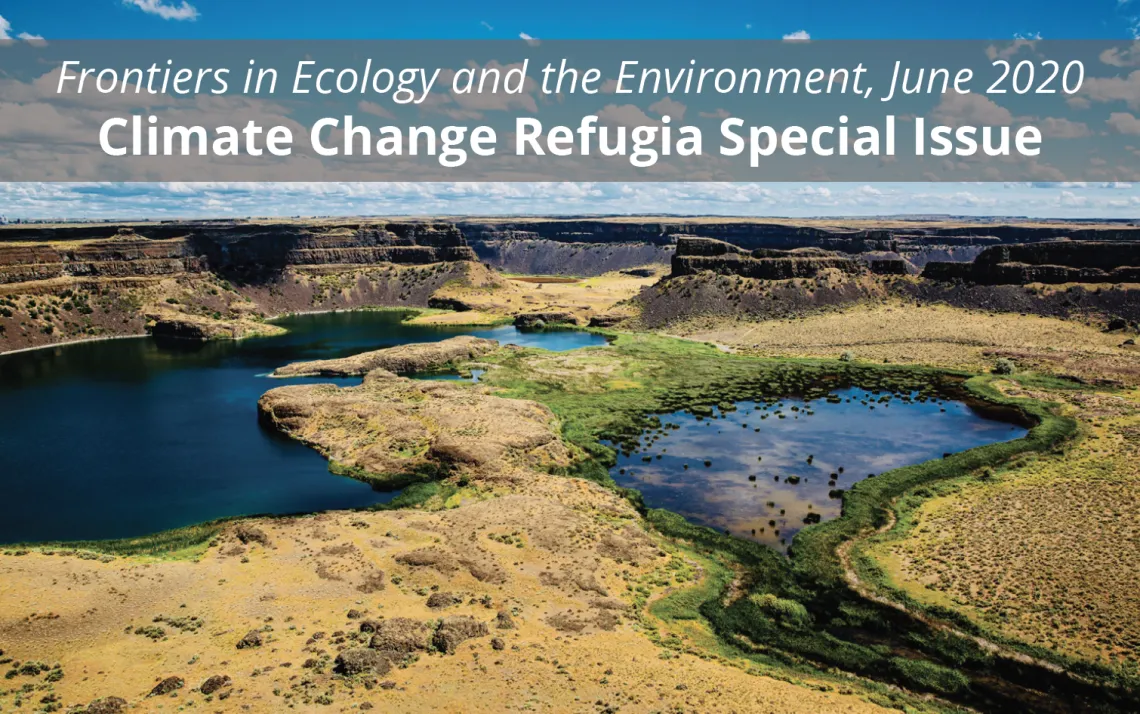Climate Change Refugia Special Issue: Buying Time for Biodiversity to Adapt in a Changing World

Human-caused climate change will rapidly alter ecosystems in the Southwest and around the world, putting species that inhabit them under severe stress. These sweeping ecological changes will leave little time for species and ecosystems to adapt to new conditions, resulting in extinctions and large-scale ecosystem transformations. In a time of dramatic ecological upheaval, identifying and protecting climate change refugia -- areas relatively buffered from climate change over time -- can protect species from the negative effects of climate change in the short-term as well as provide longer-term protection for biodiversity and ecosystem function. Although conserving refugia has been recognized as a promising climate adaptation strategy, until recently, little research on refugia has translated to on-the-ground conservation efforts. New science on climate change refugia and improved understanding of their practical applications have allowed researchers and resource managers to work together to start putting refugia conservation into practice.
The USGS Climate Adaptation Science Centers have been at the forefront of this climate change refugia research, prompting leading journal Frontiers in Ecology and the Environment to publish a special issue to look at how far the field has come in recent years and what research is still needed to effectively manage refugia in a changing climate. This special issue covers a diversity of refugia-related research, provides real-world examples of refugia conservation strategies and identifies ongoing research needs. The authors in this special issue call for broadening the scope of refugia management by moving beyond the narrow focus on climate and landscape factors to a more comprehensive understanding of refugia -- one that accounts for ecological complexity, scale and species’ ability to adapt to changing conditions -- to better capture the conservation potential of refugia. As Toni Lyn Morelli, USGS Research Ecologist at the Northeast Climate Adaptation Science Center, notes, “Networks of small, connected refugia might sustain some populations and could play a supplemental role in enabling species to persist.” Combining approaches for identifying refugia that operate at different scales and focus on different ecological processes will allow a more thorough assessment of climate change refugia potential.
Climate change refugia networks can provide short- to medium-term protection for species and buy time for other species and ecosystems to adapt in a rapidly changing world. With advances in research, theory and concrete examples, such as those highlighted in this issue, natural resource managers are better equipped to start putting refugia conservation into practice. “Climate change refugia conservation is an opportunity for hope, a chance to be proactive in a time of adversity and uncertainty,” says Morelli.
This special issue features work from Climate Adaptation Science Center researchers, affiliates and resource managers from across the network, and was born out of the work of the Refugia Research Coalition (RRC). The RRC is funded by the Northwest and Northeast CASCs to bring a network of scientists and managers together to advance refugia research and translate it into conservation on-the-ground.

